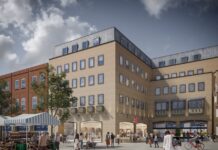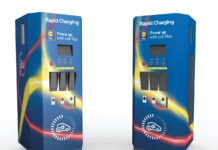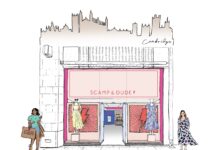Recent footfall statistics from MRI Software indicate that the shift of this year’s Easter holidays to March affected UK retail destinations, leading to a 3% decrease in footfall in April compared to the same period last year. Coupled with inclement weather conditions throughout the month and the disruption caused by rail strikes, it presented the retail sector with the ultimate combination of challenges. However, this annual drop in footfall does align with figures from 2018 when Easter fell in the final week of March leading to annual footfall levels sitting -3.3% lower in April.
The first week of the month likely contributed to the overall average annual decline in footfall for April as activity declined by -10.1% following the Easter weekend and the week leading up to the bank holiday. This also coincided with a fresh wave of rail strike action and Storm Kathleen sweeping through parts of the UK. The change in holidays may have led to further year on year declines in the third and fourth weeks of the month as comparison periods shifted.

Shopping centre activity fell by -4.7% year on year compared with a decline that was half this in retail parks and high streets (-2.4%) suggesting the events and attractions coinciding with the Easter school holidays acted as a driver in encouraging visitors to towns and cities, minimising the decline.
Despite these challenges, the Easter Holidays spanning into April may well have been the saving grace for the month as footfall rose by +1.2% in all UK retail destinations from March.
This was driven by a +3.2% rise in high streets versus marginal declines in retail parks (-0.7%) and shopping centres (-0.9%). Mixed performance throughout April highlighted the true extent of the shift in Easter holidays, combined with a return to schools and offices following as footfall fell by -5.3% week on week in the first week which followed Easter weekend, and by -3.5% in the third week which signalled the end of the Easter school holidays.
A significant event in April, the 44th annual London Marathon, highlighted the positive influence these sporting events have on towns and cities across the UK, but especially Central London on this occasion. Footfall rose week on week on Saturday 20th April (+5%) and Sunday 21st April (+9.6%) as crowds gathered on the streets of London. This largely benefited leisure and hospitality businesses post-event as footfall rose by +16.5% after 5pm when compared with the same time period in the week before, and by +7% year on year. Full day figures on Sunday for Greenwich and office locations within the city – as reflected by MRI Software’s Central London ‘Back to Office’ benchmark – also saw footfall rise by +26.9% and +24%, respectively, week on week signalling the positive impact of the marathon on various locations within the city, especially in the wake of rail strike action.
As we approach May, retailers will face another wave of rail strike action coinciding with the early May bank holiday, which could impact footfall in UK retail destinations. This could be particularly felt in towns and cities where people have already planned long weekend getaways. However, milder weather on the horizon could minimise the impact on destinations which are easily accessible by car. In spite of these challenges, there is optimism for the sector which is supported by an improvement in consumer confidence (GFK) by two points in April to -19. This was driven by improvements in all areas including the measure for the general economic situation and how people view their personal financial situations over the last 12 months, as well as expectations for both of these indicators over the next 12 months.





















